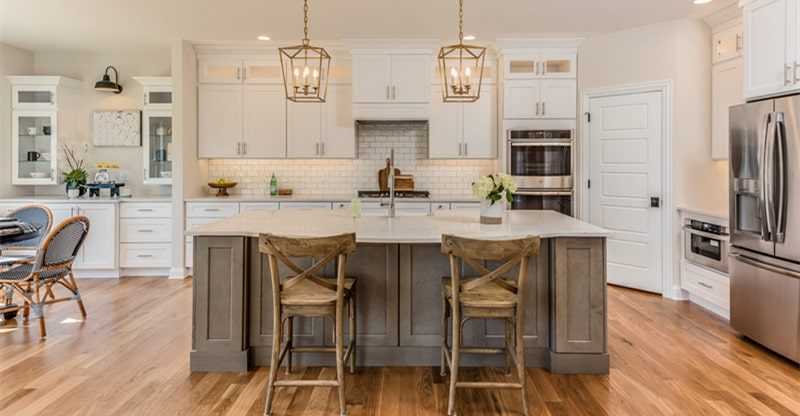What to Invest in When Kitchen Remodeling
When you’re remodeling your kitchen, there are a lot of different ways you might go about attaining the goals you’ve set for this area of your home. Think of it as a spectrum: there is the optimum result, outcomes that don’t quite meet that lofty goal, and those falling short of it. However, how optimum your final result is will largely depend on the budget.
If you spend $40k on a kitchen remodel, and the final result is luxurious but adds no property value when compared against your investment, you likely didn’t do the best you could. Unless you personally appreciate the result, and the cost is no object, you’ve diminished equity by over-spending.
However, if you only spent around $4k doing a kitchen remodel, did as much of the remodeling work by yourself as possible to exclude extraneous costs, and ultimately expanded property value by a factor of $24k, then you’ve seen a 600% increase on investment; meaning you didn’t lose a cent, you just gained equity to be recouped in the long-term.
Now certainly it’s easy to see how this might be done potentially; but how do you realistically achieve such an outcome? Here we’ll briefly explore multiple tactics that may produce this outcome.
1. Invest in Proper Flooring
You want hard flooring in any kitchen; that goes without saying. Now Luxury Vinyl Plank, or LVP, can look like hardwood, tile, or any of many different stylistic options. It’s durable, you can install it yourself, and it’s relatively affordable. Just make sure you leave about a half inch of space at the edges where they rest under walls and countertops for “flexing”.
Temperature swings cause contraction and expansion in LVP, and if you get the materials right to the edge of a room, that’s going to cause them to bow up during such times of flexibility, leaving unsightly bubbles in the floor. If you leave a little space, that problem evaporates.
You could also go with traditional tile or wood. These do tend to increase property value overall, but the cost of acquisition and installation can be high.
While there are tongue-in-groove options with pre-cut boards for modern wooden floors, installation can still be a challenge. You’ll want to weigh the costs of DIY versus contractors, and materials. The size and scope of the reflooring project could determine what is most feasible for your situation.
2. Cabinetry Is Central To Kitchen Value; Buy Accordingly
Everybody loves strong cabinets that look good and are easy to use. There are many different cabinet options, one of the most popular involves installing wooden kitchen cabinets such that they prove a complementary addition. Different sorts of wood options may or may not apply, it’s wise to choose accordingly. Explore what’s out there.
If you install your own cabinets, it will certainly conserve resources; though, for some, this isn’t ideal. However, there are RTA (Ready To Assemble) options that can allow you to acquire cabinets specifically designed to fit your property.
3. Appliances: Don’t Just Get Costly Options, Seek Functionality
Sometimes it’s a fine idea to get the latest dishwasher. Sometimes new appliances have design flaws. For example, a dishwasher may reduce its water consumption for ecological reasons. This can make its functionality less than optimal. Certainly, eco-friendly options may work fine; or they could be a total disaster and cost more money to boot.
Granted, you want new, cutting-edge options; but you don’t want to acquire such options in a way that short-changes you. Assure new and existing appliances not only work but work well.
Value-Enhancing Renovations
Optimized appliance acquisition, cabinetry that specifically fits the design of your home, and flooring that not only fits your budget but which is a cost-effective addition overall, represent three notable remodeling investments for your kitchen that should yield returns. Research in advance to know the best options for your kitchen.



